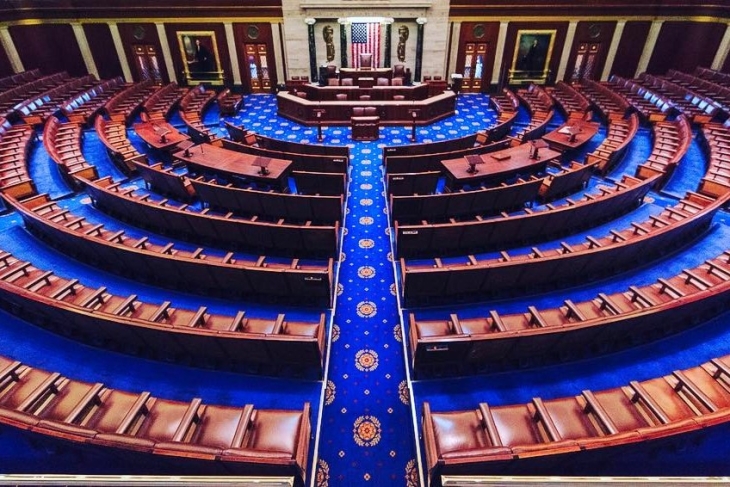What are we teaching the children about our country? The short answer: not much.
The 2020 National Assessment of Educational Progress reveals that not even one-third of our country’s students are considered “proficient” in civics, geography, or U.S. history—not in fourth grade, not in eighth grade, and not in twelfth grade. The “advanced” categories are even worse.
Such results are not about partisanship but, rather, our historical preference for process over content: American classrooms focus on strategies for learning how to learn, but don’t require kids to learn anything in particular. We don’t, for example, require American students to master, systematically, the history of Western Europe; understand the geography and strategic significance of Southwest Asia; examine and explain the advantages and challenges of democratic governance and the perennial risk of tyranny; recite the Preamble to the Constitution and know each Amendment in the Bill of Rights; or understand what the world’s major religious communities believe (here). This may work out tolerably well in wealthy communities that give kids routine access to background knowledge about the world. But it is devastating for low-income students (here, here, and here).
Given this stunning void, the divergent and often politicized goals of being proud or ashamed of American citizenship cannot even get off the ground—still less, move beyond shallow, zero-sum postures. Civic attachment, if it means anything beyond cheap rhetoric, relies upon a broad foundation that includes not only one’s own national history, but also world history, geography, economics, philosophy, and religion. We’re not there—by a long shot. This is in stark contrast with our democratic peers, most of which hold schools and students accountable for a comprehensive, content-rich curriculum in all subjects—including social studies (here and here). Furthermore, social studies gets short shrift in the school schedule, thus harming not only students’ civic knowledge, but their achievement in other subjects, too.
In the face of this discouraging reality, there is some good news. The National Endowment for the Humanities has commissioned a Road Map for Excellence that should set a high standard for what the next generation of citizens needs to understand, know, and be able to do.
But the question remains: What, exactly, are we teaching the children about our country, now? At the Johns Hopkins Institute for Education Policy, where I am Associate Professor and Deputy Director, we’ve pioneered a way to answer this question. Our structured analysis provides a topic-by-topic landscape of K–12 social studies curricula that results in a map of the exact content-knowledge a social studies curriculum reinforces or omits, in which grades, and with what quality or bias. We also assess whether each social studies unit includes more than one perspective, and whether the teacher-facing materials encourage deliberation and disagreement, another critical civic capacity that requires sustained practice in the classroom. With such information, state policymakers and local communities can make concrete changes that prioritize the systematic development of key domains of knowledge through high-quality sources, and with a diversity of perspectives.
This is a one-of-a-kind instrument formally named The Social Studies Knowledge Map.
Our early findings are not yet nationally representative. On the positive side, the elementary curricula we have reviewed offer strong foundations, especially in local history; many of the elementary and secondary units include multiple perspectives on important topics; and some of the teacher-facing materials enable an “open-classroom climate”—an independent and beneficial influence on long-term civic outcomes. On the negative side, there are too few primary sources in elementary grades; many units include topically unrelated materials; and religion and philosophy, both important factors in human history, rarely appear. As our reviews grow in number, so too will our ability to report more systemic findings that can influence system-level decision-making.
But landscape analyses of formal curricula are only the first step. Are teachers even using the formal curriculum? If not, what are they using instead? How frequently do teachers create and scaffold substantive deliberations for their students? Do principals assign a high value to civics and social studies? Do parents? The answers to these critical questions rest on other tools and studies in which Johns Hopkins, and many others, are also engaged.
The need to prepare young people for democratic citizenship transcends political party, election cycles, and sound bites. One thing that adults across the ideological divide can do right here and right now is take a courageous look at the classroom content that really matters—and support our teachers as they deliver it.




